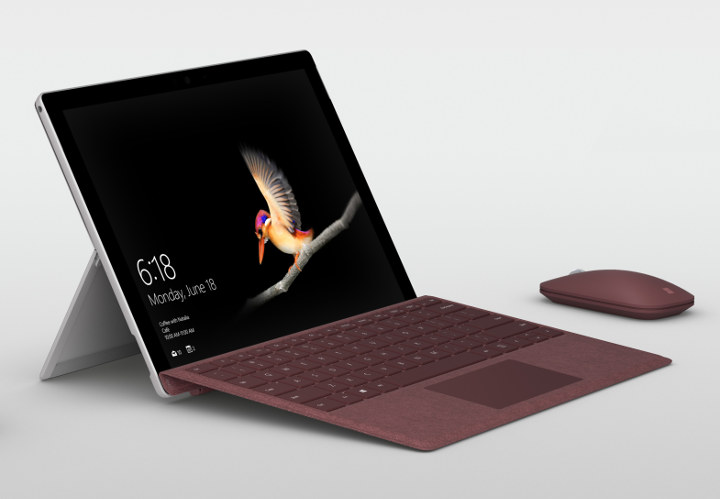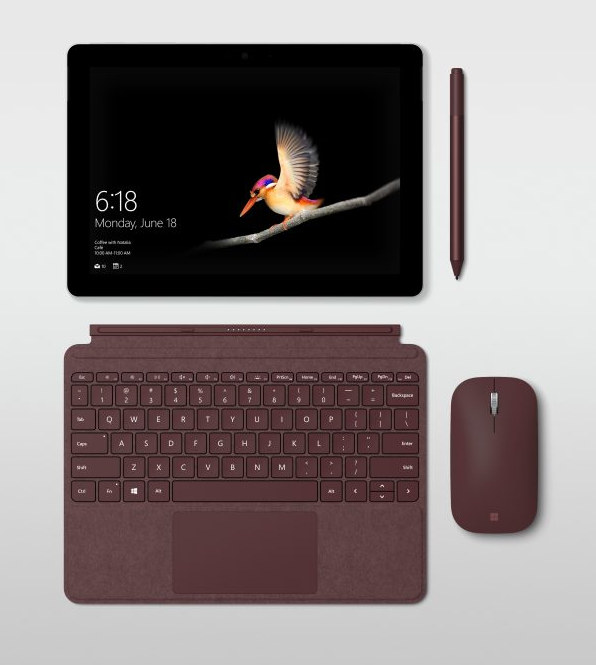Microsoft Surface devices are powerful but usually expensive ($2,000+) tablets and laptops, but the company has now launched an entry-level model called Surface Go, powered by an Intel Kaby Lake Pentium processor with 4 to 8GB RAM, 64 to 256 GB storage, and a 10″ high resolution display, and selling for $399 and up.

Microsoft Surface Go specifications:
- SoC – Intel Pentium Gold 4415Y dual core/four thread Kaby Lake-Y processor @ up to 1.6 GHz (base frequency), with 24EU Intel HD Graphics 615 @ 300 / 850 MHz; 6W TDP
- System Memory – 4 or 8GB LPDDR3-1866
- Storage – 64GB eMMC flash, 128GB or 256GB SSD, micro SD card slot
- Display – 10″ 1800×1200 PixelSense display; 3:2 aspect ratio; built-in kickstand with full friction hinge that extends to 165 degrees
- Cameras – 8MP Rear camera, 5MP Front-facing camera with Windows Hello facial recognition
- Audio – 3.5mm headphone jack
- Connectivity – 802.11.ac Wi-Fi + Bluetooth 4.1; LTE model(s) to be announced at a later date
- USB – USB 3.1 type C port for data, video, and power/charging
- User Input (All optional)
- Surface Go Signature Type Cover with ergonomic keyboard and Windows Precision Trackpad supporting five-point multi-finger gestures
- Surface Pen with 4096 levels of pressure sensitivity
- Surface Mouse
- Misc – Magnetic Surface Connect port for accessories like the Surface dock
- Battery – Good for a typical 9 hours on a charge
- Dimensions – 8.3mm thick
- Weight – 532 grams
The thing will obviously run Windows 10 since it’s a Microsoft device.
Surface Go starts at $399 with 4GB RAM and 64GB eMMC, but the 8GB RAM/128GB SSD version will cost you $549, and the cover with keyboard/touchpad an extra $99/$129 (depending on color), while the Surface Pen will be offered for $99 and the Surface Mobile mouse for $34.99.
Pre-orders are staring today in US, Canada, Australia, New Zealand, UK, Ireland, France, Germany, Austria, Belgium, Luxembourg, Netherlands, Switzerland, Denmark, Finland, Norway, Sweden, Poland, Italy, Portugal, and Spain, but the Surface Go is soon coming to Asia, specifically to Japan, Singapore, Korea, Taiwan, Malaysia, Thailand, Hong Kong, and China. Other markets will follow later on.

Jean-Luc started CNX Software in 2010 as a part-time endeavor, before quitting his job as a software engineering manager, and starting to write daily news, and reviews full time later in 2011.
Support CNX Software! Donate via cryptocurrencies, become a Patron on Patreon, or purchase goods on Amazon or Aliexpress





